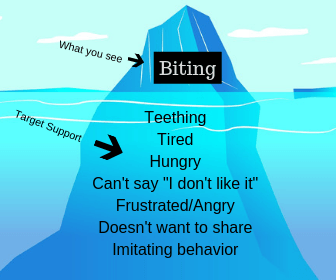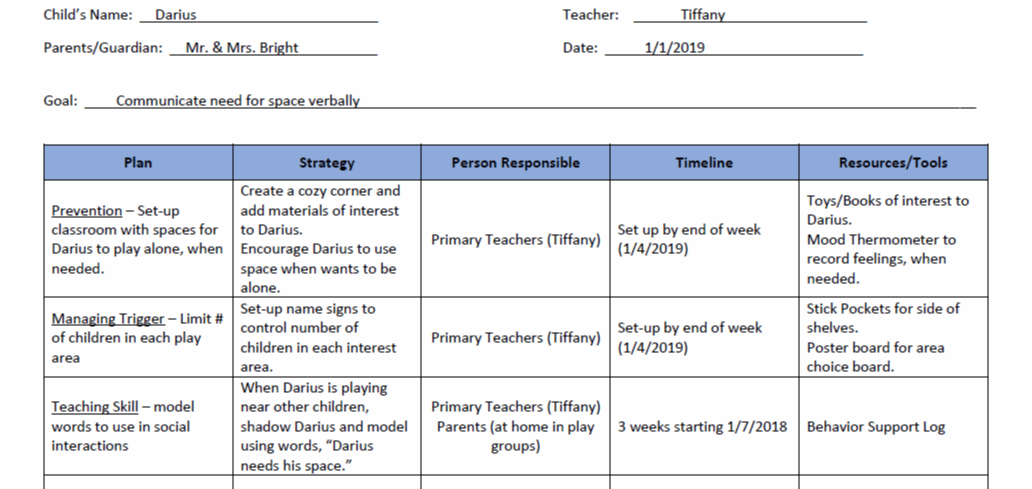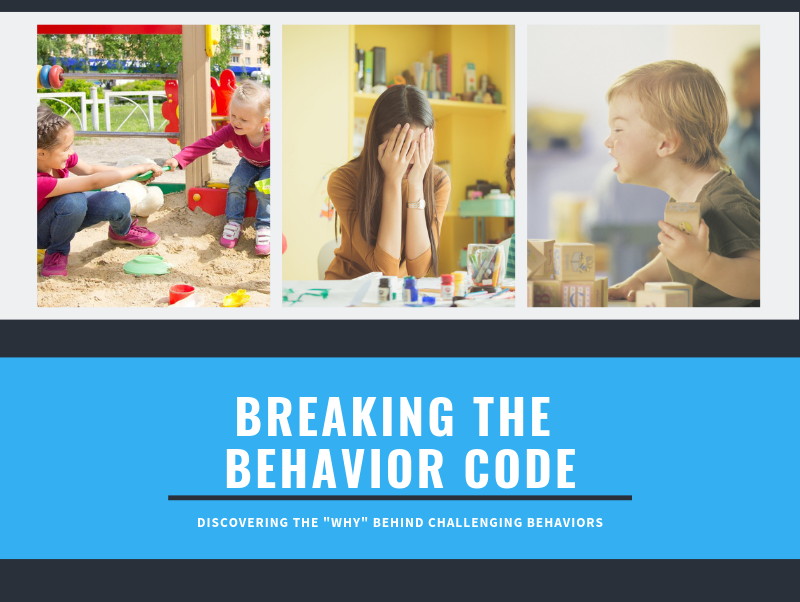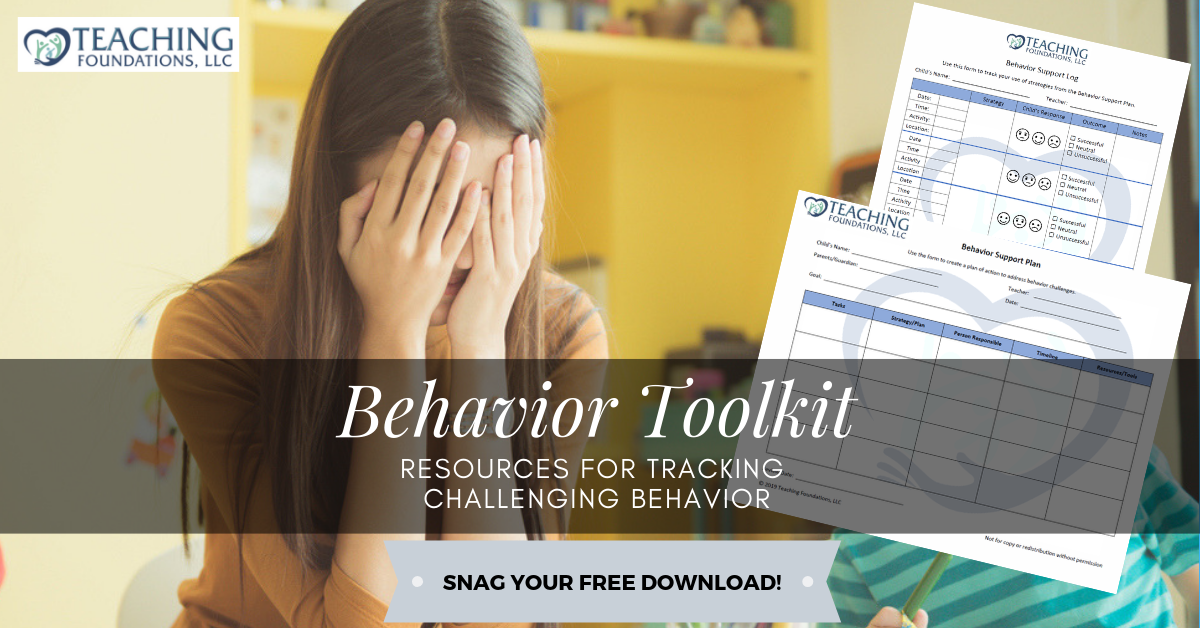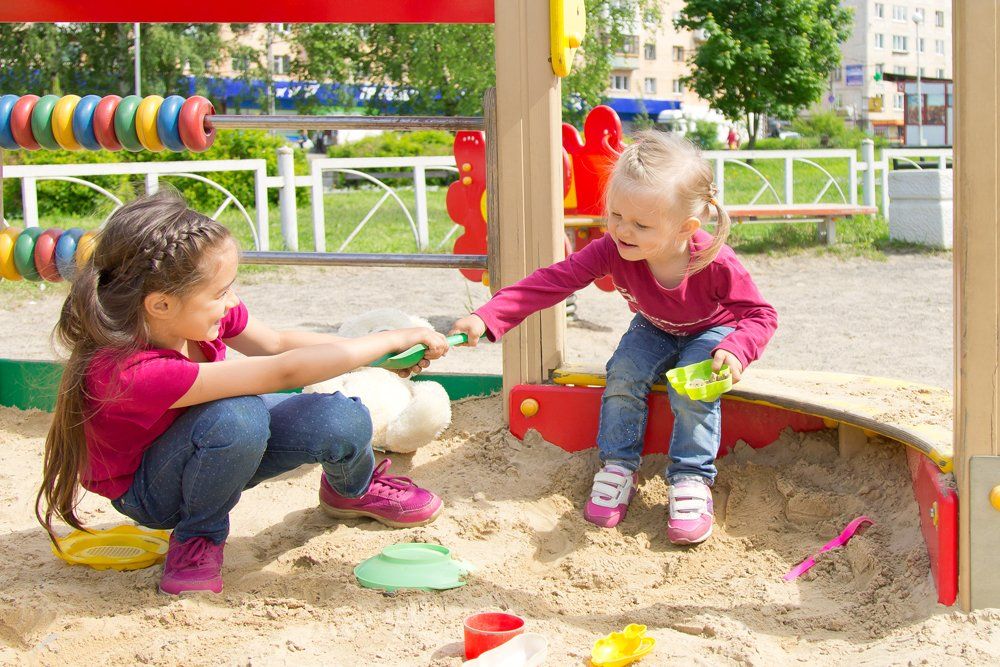Becoming a Behavior Detective
Three Questions Preschool Teachers Need to Ask When Managing Challenging Behaviors
You’ve probably heard this phrase before: “Behavior is communication!” When you ask someone for guidance and support with challenging behaviors, they respond, “The behavior is telling you something.” However, knowing what the behavior is communicating is challenging. You’re seeing the hitting, screaming, and throwing toys and you are thinking, “I don’t care what he’s is communicating! I want him to stop!”
Well, here’s the challenge: If you want the behavior to stop, you need to know what’s driving the behavior. Think about it like a car. If the driver keeps pushing the pedal, the car will continue to move. You need to stop the driver first, then you can stop the car. The challenging behavior is the car. The “why” behind the behavior is the driver. Basically, you have to uncover what the child is getting out of the behavior in order to stop it.
If you’ve been struggling with challenging behaviors, trying different strategies and tools and finding that nothing’s working, your problem is probably related to the fact that the tools and strategies do not address the reason for the behavior. Let’s dissect this with the following scenario from one of our previous posts :
We gathered all the children on the carpet to read a story. Sam did not want to sit down. Instead, he went to the library area and began to climb on the furniture. I began to read the story and Sam started to shout, “Why don’t you shut up!” When I finished reading the story, I started to prep the tables for lunch. My co-teacher did movement games with the children on the carpet. Sam approached me and said, “I’m going to help.” I responded, “No, thank you. You may join the group.” Sam then tipped over two chairs before making his way over to the group. He then took out the container of bean bags and dumped them on the floor. Next, Sam threw the bean bags at the children. My co-teacher moved the children away from Sam. Sam began to throw the bean bags at me. Sam then picked up the wooden blocks and threw them across the room at the children.
In this scenario, the teacher’s tried two common strategies for managing tantrums: sending the child to a calm down area and ignoring the behavior. However, those strategies did not work in this scenario because they did not address the “why” behind Sam’s behavior: He did not want to participate in group time. This scenario comes from a teacher I coached, and her goal was to get Sam to “sit for group time”. In this moment, Sam needed support with finding alternative options to group time. His behavior was his attempt at expressing his frustration with not having a second option to group time. When he asked to help, the teacher said, “no”, and this sent Sam into a tailspin. In order to be successful in this situation, the teachers would first have to recognize what Sam’s behavior was initially telling them and find appropriate ways for Sam to get what he needs (freedom of choice).
So, how do you do this? There are three questions that every preschool teacher working with challenging behaviors needs to ask before finding tools and strategies:
(1) Why is the child behaving this way?
(2) What do I want them to learn?
(3) How can I best teach them this?
What
I like to call the Why-What-How
approach to behavior management. Notice
the How
(tools and strategies) is
last. First, the teacher needs to become
a “behavior detective” and seek out the reasons for why the child is doing what
they are doing. Teachers need to gather
evidence, look at the evidence, and find the patterns that “uncover” the reason
why. By asking How
first, you are simply picking tools and strategies out of the
air and the behavior continues because the Why
is still present. When following the Why-What-How
approach, you are creating
a specific behavior support plan to address the specific reason for the
behavior. Stopping the car by stopping
the driver.
Let’s walk through these three questions in greater detail.
Why is the child behaving this way?
To answer this question, you need to take time to observe the behavior and track its occurrences. This is the first two steps in my 5-step process for managing challenging behaviors. Learn more about this process here !
In my online training, Breaking the Behavior Code: Discovering the “Why” Behind Challenging Behaviors , I introduce 3 forms used to observe and track behavior: (1) ABC Charts, (2) Frequency Charts, and (3) Anecdotal Records. ABC charts collect information about the events occurring within a child’s environment. When completing this form, teachers record what happened before the behavior (the antecedent), what happened (the behavior), and what happened after the behavior (the consequence). Frequency charts are a measure of how often and long the behavior occurs. These charts help teachers specifically identify how severe the behavior is (once a day vs fifteen times/day). Anecdotal records are a short story that include descriptions of behaviors and direct quotes. Anecdotal records include the details about the incidents recorded in ABC charts. These three forms when used in combination reveal the patterns in the behavior. These patterns are the clues for identifying the triggers and the functions (the reward for the child) of the behavior. They will also provide you with objective details and facts to share with families when communicating with them about challenging behaviors.
It’s important for all documentation of challenging behaviors to be written using objective language. Teachers should write only what they learn through their senses (seeing, hearing, smelling, and feeling). This allows the teacher to identify specific behaviors, actions, and interactions that may be driving the behavior. For example, the child stomped his foot on the floor and the floor began to shake or the child leaned forward and screamed, “I’m going to hurt you”, while looking directly into my eyes. These statements clearly explain what happened in terms with which everyone can agree. This also allows for parents, teachers, and administrators to communicate and share potential reasons for the behavior because the “cause” has not been pre-determined.
Using objective language is also important because our interpretations or reflections about behavior are based on our cultural background, expectations for children’s behavior, and how we were raised. These factors are the “lens” through which we give meaning to what we observe. For example, different cultures have different behaviors associated with “respect”. If an African American teacher has a child from a Korean background who looks away when she is talking, the teacher may interpret this behavior as disrespectful and not listening. However, the child’s culture has taught him that looking at adults in the eyes is disrespectful and he looks away when the teacher is talking to show respect. This example shows how our reflections on children’s behaviors may not always be accurate. It’s through discussions with families about what the child specifically did that the teacher can “uncover” what is really happening with the child. Instead of the teacher telling the parent that the child was “disrespectful”, the teacher would communicate the objective facts (the child looked away when I was talking to him) to the parent. Then, the parent can explain the behavior to the teacher based on how their culture views such actions. The sharing of objective information between teachers and parents is the beginning of building a strong partnership for addressing the reasons for the challenging behavior.
What do I want them to learn?
After you have identified the reasons behind the behavior, the next step is to think about what the child needs to learn. Challenging behavior is frequently linked to a need to learn necessary social skills for prosocial interactions. Remember, babies are not born knowing how to play with others, manage their emotions, and solve problems. These are skills learned as children grow and mature. Therefore, it is important for teachers to know what social skills need to be learned and to intentionally teach these skills for the child to exhibit more appropriate ways to meet their needs.
Another important consideration is whether the behavior is developmentally appropriate. For some behaviors, the child may not be at a developmental stage where they can behave the way adults want them to behave. For example, tantrums and biting may be developmentally appropriate for toddlers and young 3 year-olds who do not have the language skills to communicate their feelings or needs. Thus, they use behavior to do this for them. In this case, you would make adaptations to your environment to minimize triggers, while the child learns the language skills needed to engage in expected behaviors.
During conversations with families, you want to focus on this aspect of the Why-What-How approach. Communicating to families what you want the child to learn and how they teach those skills at home will help you identify potential strategies to try at school and how to adapt your interactions to the child’s temperament. Additionally, sharing what you are teaching the child at school and suggestions for how the parents can do the same at home helps the parents become a part of the process as opposed to an outside observer, or worse, an obstacle to overcome. I list 6 tips for partnering with families of children with challenging behaviors in this post. You can also download our questions to ask families resource here.
How can I best teach them this?
Now that you know why the child is engaging in the challenging behaviors and what you want them to learn, it’s time to find the best strategies and tools to accomplish the learning goal. In my article about the 5-step process for managing challenging behaviors, this is Step 3: Creating a Behavior Support Plan. To learn specific information about creating a behavior support plan, check out our article here or take our online course Breaking the Behavior Code: Discovering the “Why” Behind Challenging Behaviors here.
I have two favorite sites for finding tools and resources for managing challenging behaviors: Center on the Social and Emotional Foundations for Early Learning (CSEFEL) and the website Connectability . They both offer great visual supports, including individual schedules and first-then charts, as well as, activity plans for teaching social-emotional skills. The CSEFEL website also has books you can read to children to introduce social-emotional concepts, such as identifying feelings, sharing, and social-problem solving.
The important thing to remember is that the tool or strategy needs to address the “reason” for the behavior by teaching the needed social skills for the child to be able to behave the way we want them to behave. If a child is biting because they are struggling with controlling their emotions, teaching them to “use their words” will not help them stay calm when someone takes their toy. The replacement behavior has to address what is happening with the child. This child in this example would need a mood thermometer and a calm down zone with calm down materials to teach him appropriate ways to express his emotions. When he is calm, he can move on to using his words.
A behavior support plan is a specific plan of action and should include specific strategies, tools, and resources. It should also include who is responsible for implementing which tools and strategies, as well as, the times when the strategies are to be used. A plan to track the success of the strategies has to also be included in the written plan, as well as, a timeline for implementation and review. Find out more about this here.
Now that you know the three questions to consider when addressing challenging behaviors, it’s time to take action. Download our Behavior Toolkit here and start tracking the challenging behaviors to answer Question 1: Why is the child behaving this way? You can also join our Learning Community Forum , where we share and discuss specific tools and strategies for managing the challenging behaviors in your classroom. Join us by clicking here.
What are you thoughts? Have you tried the Why-What-How approach before? If it’s new to you, how will you begin to use it when planning behavior supports in your classroom? Let’s discuss your thoughts below.
Do you have a process for addressing challenging behaviors in your early childhood program? Our live, instructor-led virtual training, Breaking the Behavior Code: Discovering the "Why" Behind Challenging Behaviors will teach you our 5-step process. Sessions running in September and October.






